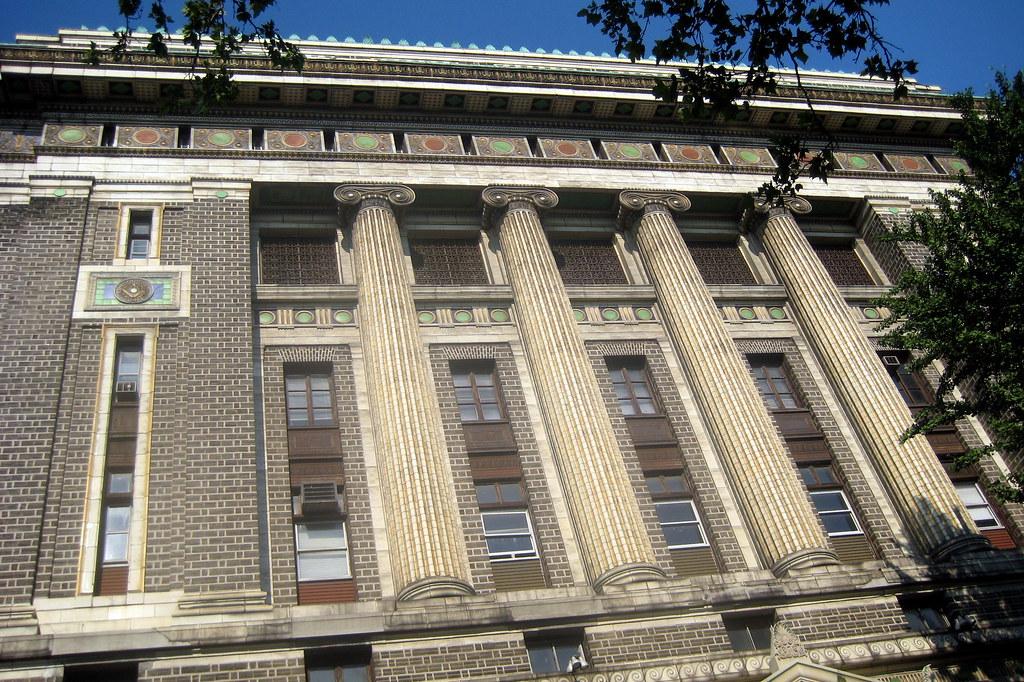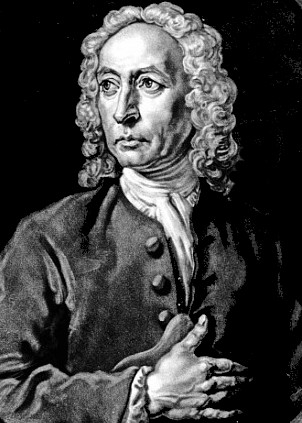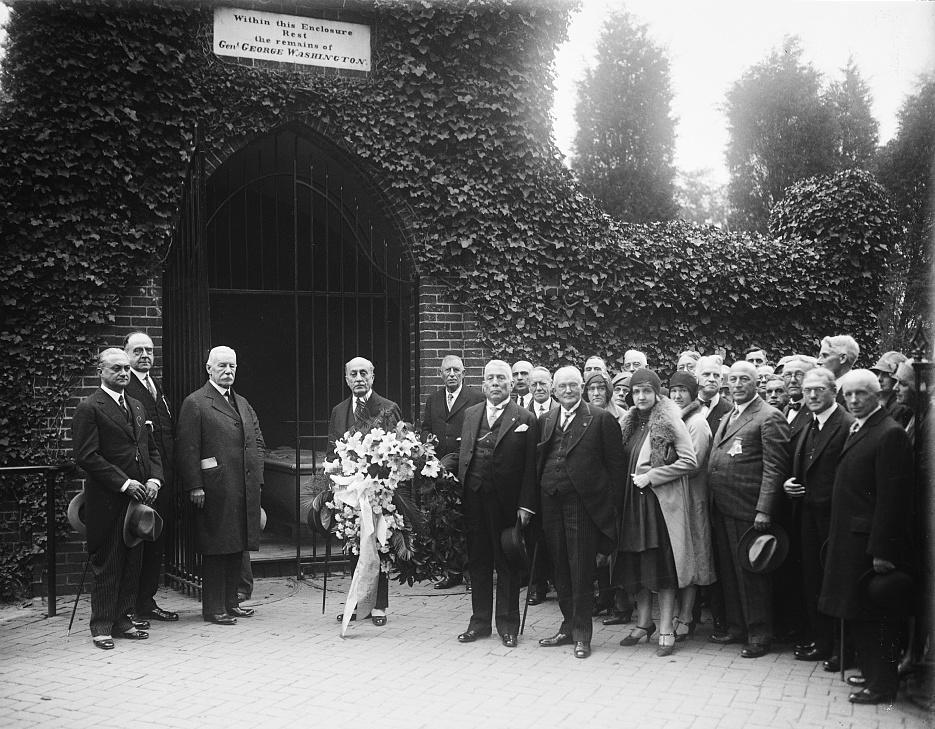Freemasonry was born from stonemasons’ guilds in the Middle Ages, though some of the group’s foundational texts claim they descended from the Knights Templar. Luminaries from Mozart to George Washington have belonged to this secretive brotherhood, which today is well-known for their mysterious rites and symbols. But what do the Masons actually believe, why are they so private and so powerful, and how does one go about joining this elusive – and exclusive – society?
◊
If you find yourself on the tree-lined streets of Fort Greene, Brooklyn, you might stumble upon a formidable-looking building. That was the experience I had this recent Election Day, when I spotted a crowd of people gathered outside a structure unlike any I’d ever seen.
As a New York City resident, I’m used to coming upon cultish insignia and opulent churches in between residential buildings, but this particular building was so striking, I had to stop and stare. Bracketed by a church and a housing project, it felt like an invitation into another world.
The Fort Greene Masonic Temple looms over everything around it. It’s emblazoned with magnificent, distinctly occultish, colorful carvings and held up by huge pillars. Even after I returned home, I kept thinking about the temple. As (bizarre, untrue) rumors and conspiracy theories swirled about secret cabals following the election, I became interested in the actual secret society that had built this temple.
 Fort Greene's Masonic Temple. (Image Credit: Wally Gobetz/Creative Commons)
Fort Greene's Masonic Temple. (Image Credit: Wally Gobetz/Creative Commons)
The structure is a fitting window into the ideals and practices of a group that started as a coalition of itinerant European craftsmen and builders. That assembly of workers would become one of the largest and most misunderstood secret societies in the world.
Origins of the Masons
Predecessors of the Freemasons date back to the Middle Ages, when groups of highly skilled stonemasons and cathedral-builders often lived together while they were working on projects in similar areas. Over the years, these temporary communities turned into guilds, and members developed a lexicon of symbols and signs.
As the need for cathedral builders declined in Europe, these skilled craftsmen began accepting symbolic or speculative Freemasons – honorary members who shared the founders’ original admiration for geometry, order, and shape. Soon, the guilds turned into philosophical societies that focused more on the ideas behind masonry rather than actual building.
Old Masonic handbooks describe Freemasonry as “a peculiar system of morality veiled in allegory and illustrated by symbols,” “a science which is engaged in the search after the divine truth,” and “the activity of closely united men who, employing symbolical forms borrowed principally from the mason's trade and from architecture, work for the welfare of mankind.”
Watch "Secrets of the Masons" on MagellanTV.
According to James Anderson, a Presbyterian minister who wrote one of the earlier histories of Freemasonry, the group was founded by God, also known as the “Great Architect.” Over the centuries since their formation, the actual history of Freemasons has been obscured by mythology and hyperbole. Some Freemasons’ legends tie the group to the Knights Templar. Others trace back to King Solomon, and take credit for great architectural triumphs including the Egyptian pyramids.
There is little actual historical evidence to back up these legends. We do know that the earliest Freemasons’ lodge officially on record is the Premier Grand Lodge of England, which opened on June 24, 1717, with Anthony Sayer as the first Grand Master.
 Anthony Sayer
Anthony Sayer
(Image Credit: Wikimedia)
In those days (and for a long time after), only men could be Freemasons, and all members were bound to strict secrecy. Many of the group’s early members were European philosophers and intellectuals interested in cutting-edge scientific ideas of the time, such as Newtonian physics and the scientific method.
By the mid-18th century, the Freemasons spread across Europe, adding members everywhere from Portugal to Russia and making enemies along the way, namely the Catholic church. Perhaps unsurprisingly, the group made it across the Atlantic and found massive success in what is still one of the most conspiracy theory–drenched nations in the world: the United States.
Freemasonry Comes to America
It’s impossible to disentangle Freemasonry’s arrival in the New World from the American Revolution. The earliest American Masonic Lodge was founded in 1733 in Boston, and from there, Freemasonry took off. Though Freemasons initially pledged allegiance to King George, many eventually rebelled and helped sow the seeds of the Revolution in their lodges.
“Freemasonry was the first widespread and well-connected organization to espouse religious toleration and liberty – principles that the fraternity helped spread through the American colonies.” – Mitch Horowitz, U.S. News & World Report
Early Freemasons included George Washington, Paul Revere, and John Hancock, and it is believed that somewhere between nine and 15 of the 56 signatories of the Declaration of Independence were Masons. Following America’s independence, Freemasonry continued to grow in the States, embedding itself in the nation’s DNA. When Washington laid the first cornerstone of the District of Columbia, he did so in a Masonic ceremony.
 Masons pay tribute to George Washington. (Image Credit: Harris & Ewing/picryl.com)
Masons pay tribute to George Washington. (Image Credit: Harris & Ewing/picryl.com)
Numerous U.S. presidents have been Masons. Teddy Roosevelt and Harry Truman were Masons. Even Gerald Ford was a Mason. The hefty presence of Freemasons in America’s government inspired the nation’s first third party, the Anti-Masonic Party, which debuted in 1828 with the express purpose of destroying Freemasonry. (Like all third parties so far, they failed). Over the history of the country, a total of 14 U.S. presidents have been Freemasons.
Core Beliefs of the Freemasons
Freemasonry is a complex organization with more than six million members worldwide, making it the world’s largest secret society. While each lodge has its own unique practices, Freemasons generally believe in three fundamental tenets:
- Brotherly love: The Freemasons believe that people’s responsibilities to their fellow humans comes first and foremost in importance.
- Relief: Freemasons believe in practicing mutual aid and charity that benefits people in the here-and-now, not in an afterlife. Masons often create philanthropic organizations that provide relief to people affected by all manner of disasters and human rights crises. In addition, they’re often active in their own communities, helping on a smaller scale.
- Truth: Freemasons believe that everyone is on a quest for knowledge, and all must find it for themselves.
Despite the fact that their central beliefs resemble those held by many religions, Freemasonry is, except in select cases, strictly not a religious (or political) organization. Freemasons are also banned from discussing religion or politics in their lodges. In spite of this, though, atheists are generally not allowed in Masonic temples, as the group does, collectively, believe in a higher power.
Julie Beck, writing in The Atlantic, notes that the Freemasons progress through three stages: apprentice, fellow craft, and Master Mason. Each degree requires its own initiation rites. And while the actualities of these rites are generally kept secret, most apparently involve long lectures performed from memory, promises uttered over sacred texts, and complex handshakes.
One such ritual, according to a Freemason named Ian Kingsbury, involves removing one’s jacket and rolling up one’s trousers to expose the ankles. The ritual is meant to “show that a man is not a slave and does not have chains on his ankle,” says Kingsbury, and also to encourage compassion. “He comes, jacket off, poor and penniless and this reminds us to look after someone in that way if we come across them."
Most available accounts of these rituals seem to resemble Kingsbury’s – rites that are deeply symbolic, if a bit strange to the uninitiated. Because Masons generally don’t share their secrets, suspicions about the group have abounded, and some people have reacted strongly against them.
Controversies and Conspiracy Theories
Due to their emphasis on science and their interest in a wide variety of religions, the Freemasons have always come into conflict with the Catholic Church. Over the past few centuries, the Church has issued over twenty decrees against the organization.
Thanks to this and their emphasis on secrecy, the Freemasons have garnered quite a bit of suspicion over the years, and they are ground zero for conspiracy theorists. Some propose, outlandishly, that the group is in league with everyone from the Illuminati to Hollywood. Some propose Freemasonry is trying to bring down Christianity, while others assert that it is attempting to bring down Islam. Others, including Adolf Hitler, leveraged anti-Semitic sentiments against the group.
While all these theories are unfounded, it’s not hard to see why people speculate so much about the group. Pop culture phenomena like Dan Brown’s The Da Vinci Code and many other stories have played into these narratives, dramatizing the group’s activities.
.png)
The great seal of the United States.
(Image Credit: Wikimedia)
Freemasonry is also well-known for its use of symbolism, much of which is easily visible in everyday life, if you know where to look. One of its more famous symbols is the Great Seal of the United States, the eye-and-pyramid symbol that can today be found on the back of the U.S. dollar bill.
The Latin phrase that surrounds the Masonic pyramid on the U.S. dollar bill – Annuit Coeptis Novus Ordo Seclorum – can be loosely translated to “We undertake a new order of the world.” The phrase is a reference to Virgil’s Eclogue.
The Freemasons use dozens of other lesser-known signs and symbols, including the beehive (a symbol of industry and organization), Jacob’s Ladder (representing the Masons’ spiritual journeys), and more. These symbols, many of them occult in nature, have fueled the fires of many a conspiracy theorist.
Freemasons who have chosen to speak about their organization insist that the conspiracy-mongering about them is false, and explain their meetings are mostly about socializing and self-improvement. According to one member, “The ‘secrets’ of Freemasonry teach the age old practices that build better men, and better societies, through beliefs that are compassionate and altruistic to all individuals.”
Critics Highlight Genuine Problems with Freemasons
While it is clear that much suspicion of the Freemasons is grounded in baseless rumor or ignorance, the group has received some valid criticism for its lack of inclusivity. For example, male Freemasons have never accepted women into their lodges. To affiliate as Masons, women began forming their own separate lodges as early as the 1800s, and there are many female-only lodges. There are still no mixed-gender lodges, though the Freemasons do officially accept trans individuals.
In addition, Masons have also long struggled with racial and class diversity, though Black Freemasons groups date back to the American Revolution. Furthermore, the organization has long been accused of inaccessibility to the working class. Such anachronistic policies tend to undercut Masonic principles of equality, rational inquiry, and religious tolerance.
 Past Master Emblem: Square, with the 47th problem of Euclid.
Past Master Emblem: Square, with the 47th problem of Euclid.
(Image Credit: Arielinson, via Wikimedia)
In addition, some suspicions about Freemasons’ goals have been brought to light in recent years. In 2018, a Police Federation chair alleged that Freemasons in the force were joining together to block reforms that would allow more female and Black police officers to progress in the ranks. Others have argued that the group’s secrecy allows for behind-closed-doors machinations to take place. But such allegations and criticism are perhaps less common than in the past.
Freemasonry, like any large organization (or human being), is clearly complicated, and understanding it requires us to hold multiple truths at once. Their objectives may be admirable, though strange and suspicious activities may have damaged the reputation of some leagues. Still, it seems that the Freemasons’ problems have more to do with social issues and systemic problems rather than secretive plots to take over the world.
Why I Won’t Be Joining the Freemasons
Fort Greene’s Masonic Temple was built in 1906. It is a prime example of that era’s Classical Revival style, which pulled elements from Greek and Roman traditions. This is fitting, as the Masons themselves seem to be tied to prior times, their secretive rituals reminiscent of ancient ceremonial practices.
But ultimately, despite all the speculation about them, it’s worth remembering that the group was created by ambitious stonemasons, people who wanted to apply the perfect craftsmanship of a divine architect to the messiness of human existence.
Learn more about the secretive origins of the Freemasons in the MagellanTV documentary The Heirs of the Knights Templar.
To join the Masons, you must be at least 25 years of age. You must also believe in some form of God as well as free will. In addition, you typically need to come recommended by at least two members of the lodge you want to join. For this reason alone, I don’t think I’d like being a member that much even if I could; organized social networks have never been my speed. Plus, the routine activities of the Freemasons actually sound rather boring – in practice, apparently, they play a lot of cards.
For now, I’ll stick to speculating about their symbols and marveling at their spectacular architecture, which, at the very least, helped Fort Greene’s voters make their voices heard this past Election Day. And if that’s not a proper utilization of the Freemasons’ emphasis on community, structure, objectivity, and free will, I don’t know what is.
Title image courtesy of EricCable, via Wikimedia.

